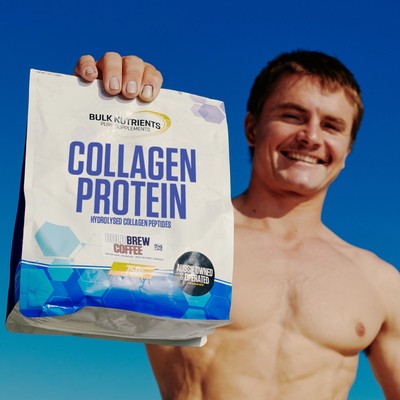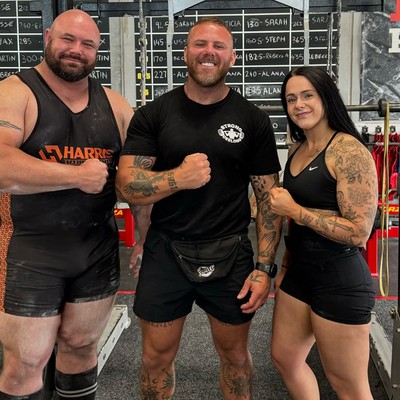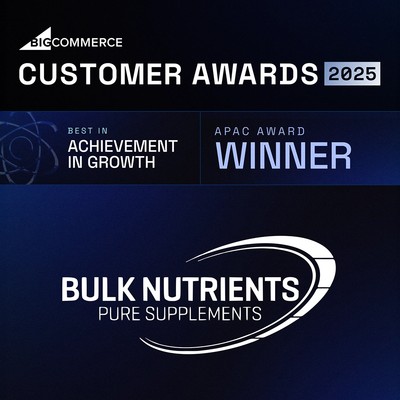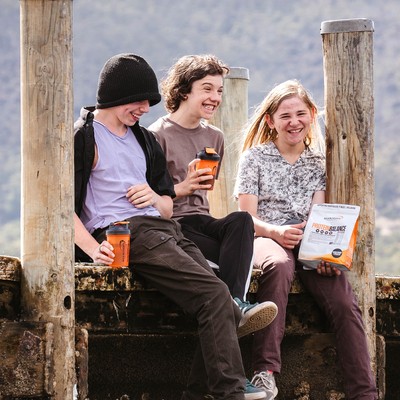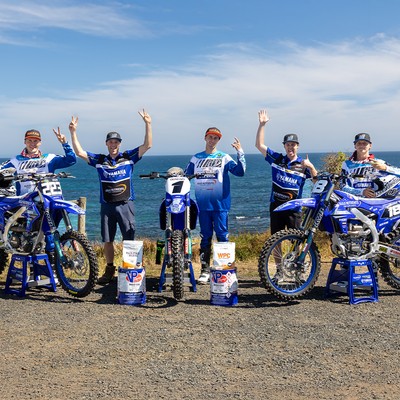What Is Progressive Overload and How Will It Help Me Grow More Muscle?

The best way to grow muscle
We've spoken many times on this blog about the three principles of muscle growth, that should be on the walls of every gym:
- Mechanical Tension
- Metabolic Stress
- Muscle Damage
And pertaining to these principles, whilst not mentioned directly, is progressive overload.
And progressive overload is important because it directly drives muscle growth.
So, what is it exactly?
It's simply increasing the workload for muscles beyond present capacity.
And this is what induces further muscle growth.
Research shows we can practice progressive overload in the following four ways:
- Increasing the amount of weight we lift
- Increasing the training volume by increasing the number of reps, sets, or exercises performed
- Altering rest periods
- Increasing rep speed during lighter loads
Research tells us the most popular method is number 1.
And this falls in line with the first principle of muscle growth, mechanical tension; the tension a muscle is under in response to the load being lifted.
In other words, lifting heavy induces more mechanical tension.

Implementing progressive overload for maximal muscle growth
Progressive overload should be slowly implemented into your program.
But how slowly?
Well, research suggests that changes in total training volume (reps, sets, load) be made in increments of 2.5% to 5.0% per week to avoid the chance of overtraining.
Now whilst this all seems like common sense, no one at the gym is really doing it!
It's not uncommon to see certain gym-goers do the same volume and weight, week in and week out.
This is why most people's physiques never change.
The importance of progressive overload for muscle growth
In order for muscle to keep growing, it must be tested beyond what it is used to.
The same principle applies to most things in life; we don't get better by doing what we've always done!
Specifically, as muscles become more capable of producing greater force, power or endurance, it's time to increase the workload.
Because without these forced measures, muscle adaptations (like growth) can't occur.
And if we chose to not adapt, then we will hit a plateau.
But it's a balancing act; we must continue to lift weights with enough frequency, weight, and time, to allow for progressive overload to occur without producing fatigue.
Of course, adding more weight to the bar leads to an increase in strength, which is partially due to an increase in muscle size.
But this isn't the only way to grow muscle, of course. Lighter loads help, too.

Higher reps for muscle growth
Progressive overload can still be achieved with a lighter weight. Specifically, via the aforementioned strategy number 2: increasing the number of reps (still with a lighter weight), sets, or exercises performed.
Whilst we need to incorporate heavier weight as one strategy for progressive overload as discussed, higher reps cannot and should not be discounted.
This study had two groups of untrained subjects perform leg extensions at 30 per cent of their one-rep max, or at 80 per cent. And there was no difference in muscle growth!
Another review into rep ranges and muscle growth examined studies that had subjects perform at less than 60 per cent of their one-rep max, and more than 60 per cent. They concluded:
"...muscle hypertrophy can be equally achieved across a spectrum of rep ranges."
And then this bombshell review which included trained subjects in 2021: muscle growth can be achieved across a wide spectrum of rep ranges -- anything greater than or equal to 30 per cent of your one-rep max!
So don't be afraid to apply progressive overload strategies 2-4 with a lighter load.
The bottom line is that progressive overload is required to ensure more muscle growth. It involves increasing the workload for muscles beyond their present capacity. This can be achieved by increasing the amount of weight we lift, increasing the training volume by increasing the number of reps, sets, or exercises performed, altering rest periods, and increasing rep speed during lighter loads.
Changes in total training volume (reps, sets, weight) should be made in increments of 2.5% to 5.0% per week to avoid the chance of overtraining. Higher reps can also be utilised to build more muscle and achieve progressive overload and shouldn't be avoided.

Dayne Hudson
Like many, Dayne was once desperate to lose weight and get into shape. But everyone he asked, everything he read, lead to the same place... nowhere.
His journey started there - researching science journals and completing a Sports Nutrition Specialist qualification so he could make weight loss easier.
References:
- Allerheiligen WB. Speed development and plyometric training. In: Baechle TR, ed. Essentials of Strength Training and Conditioning. Champaign, IL: Human Kinetics; 1994:314-344
- American College of Sports Medicine Position stand: progression models in resistance training for healthy adults. Med Sci Sports Exerc. 2002;34:364-380
- Appleby B, Newton RU, Cormie P. Changes in strength over a 2-year period in professional rugby union players. J Strength Cond Res. 2012 Sep;26(9):2538-46. doi: 10.1519/JSC.0b013e31823f8b86. PMID: 22076095.
- Fleck SJ, Kraemer WJ. Designing Resistance Training Programs. 3rd ed. Champaign, IL: Human Kinetics; 2004
- Goldberg AL, Etlinger JD, Goldspink DF, Jablecki C. Mechanism of work-induced hypertrophy of skeletal muscle. Med Sci Sports. 1975 Fall;7(3):185-98. PMID: 128681.
- Kraemer WJ, Newton RU. Training for muscular power. Phys Med Rehabil Clin North Am. 2000;11:341-368
- Schoenfeld BJ, Grgic J, Ogborn D, Krieger JW. Strength and Hypertrophy Adaptations Between Low- vs. High-Load Resistance Training: A Systematic Review and Meta-analysis. J Strength Cond Res. 2017 Dec;31(12):3508-3523. doi: 10.1519/JSC.0000000000002200. PMID: 28834797.
- Schoenfeld BJ, Grgic J, Van Every DW, Plotkin DL. Loading Recommendations for Muscle Strength, Hypertrophy, and Local Endurance: A Re-Examination of the Repetition Continuum. Sports (Basel). 2021;9(2):32. Published 2021 Feb 22. doi:10.3390/sports9020032
- Thein BL. Endurance impairment. In: Hall CM, Thein BL, eds. Therapeutic Exercise: Moving Toward Function, Philadelphia, PA: Lippincott Williams & Wilkins; 1999:87-111
